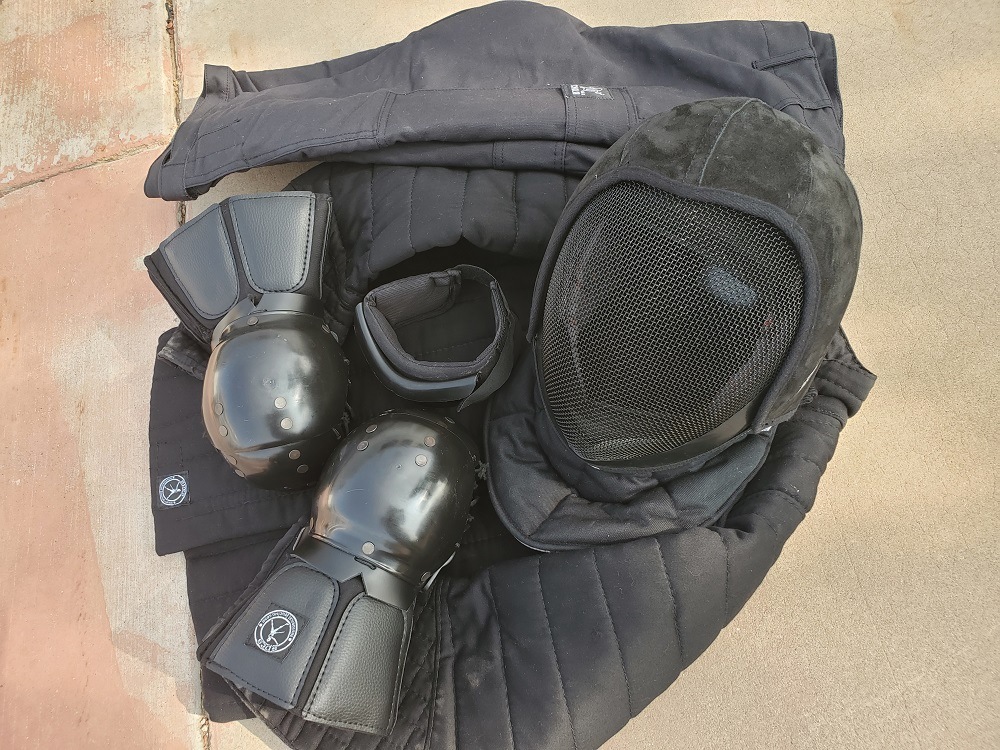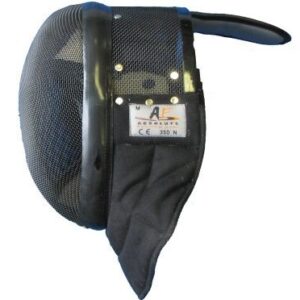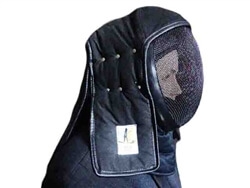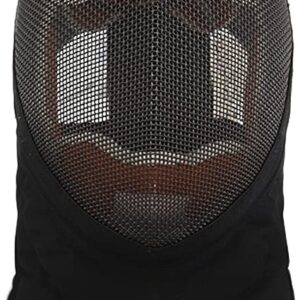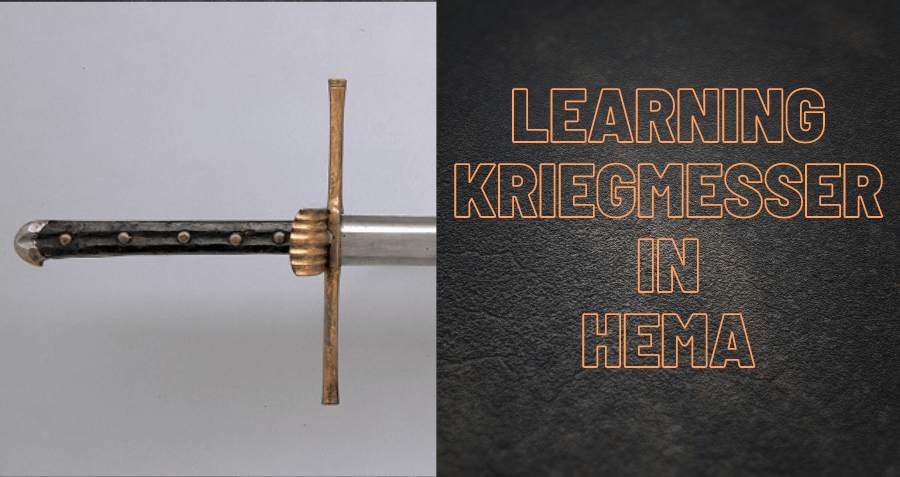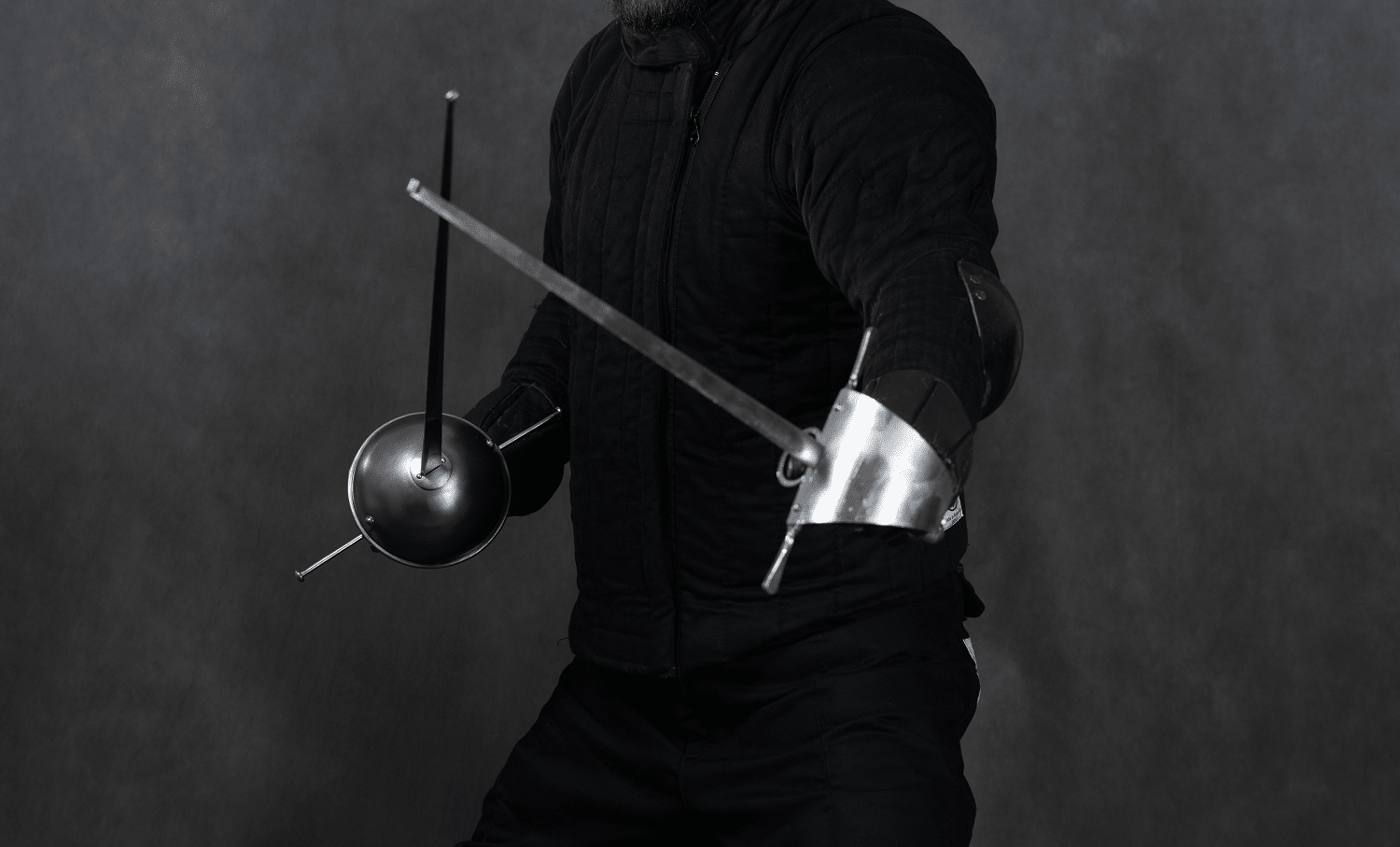Something we realize we had overlooked in the past is providing advice on how to measure your head and choose the correct size fencing mask for yourself when you want to purchase your own fencing mask for usage in Historical European martial arts (HEMA) swordsmanship, such as when fencing with a longsword, rapier or saber.
This information is also useful for those seeking to start their own HEMA clubs, as you will need to purchase loaner gear for your students to be able to instruct them.
General Guidelines for Sizing a Fencing Mask That Apply to Most People
There are some helpful guidelines that apply to most people when considering what size of fencing mask you should purchase that can make things simpler even if you don’t know your specific head measurements:
- Small size fencing masks are almost always worn by young children aged 8 to 10 years old. For this reason you probably don’t need to purchase any of these masks, unless you intend to run youth classes.
- Medium size fencing masks are primarily worn by teenagers (both genders) and adult women.
- Large size fencing masks are primarily worn by adult men.
- Extra Large size fencing masks are primarily worn by men over 6 feet tall.
These are of course just general rules. Due to sexual dimorphism amongst humans, women generally have smaller skulls as adults compared to males but some women do have skulls as large as the average adult male. You can also sometimes see people who are overweight needing to wear a size larger due to increased fat in the cheekbones making it less comfortable to wear a size that is more common for their height.
How to Measure Your Head For Sizing to a Fencing Mask
If you wish to be more confident about if a specific size of fencing mask will fit you then you need to measure the circumference of your face. First start by measuring from the space just below your chin (the halfway point of your neckline and your chin; where the ‘adam’s apple’ lies) and then measure up to to the side of your ear and then up over your head and around to the other ear and back down to under the chin. This measuring should be done with a tailor’s measuring tape.
You should then compare this measurement to the size charts of the manufacturer of the fencing mask you are interested in purchasing.
As a general rule of the thumb, recommended fencing mask sizes based on your face circumference measurement can be broken down as follows:
- 21 inches / 53.35 cm = Extra-Small size fencing masks
- 22 inches / 55.88 cm = Small size fencing masks
- 23 inches / 58.42 cm = Medium size fencing masks
- 24 inches / 60.96 cm = Large size fencing masks
- 25+ inches / 63.5+ cm = Extra Large size fencing masks
Recommended Fencing Masks to Purchase for HEMA Sword Fighting
It is highly recommended that you use only fencing masks which have a 350N bib rating. As explained in our article discussing tournament grade HEMA equipment, bib material is rated to be puncture resistant in the event that blades break and so that when they snap the pieces don’t pierce your clothing and impale you. Some tournaments may require that you have a fencing mask with a bib rating of at least 1600N, but this is not necessary for a beginner starting out in HEMA nor is it necessary for fencing masks expected to be used as loaner equipment. A 350N rating is sufficient for these purposes.
You can learn more about fencing material ratings in our article about tournament grade equipment.
As for specific brands of masks to use for fencing in HEMA, the most common types of fencing masks are coach masks. Common manufacturers are Red Dragon and Absolute Force.
More specific and comprehensive information on what brands of fencing masks are good for beginners and other protective equipment you will need are detailed in our article about Starter Gear for HEMA. Please read it if you’d like to see our list of recommendations and why you should have this gear.
****
If you’d like to learn more information about historical fencing practices please check out our Learn HEMA page for a guide to learning about the historical weapon that interests you. You can also find more guides we’ve written about other topics at our Helpful Guides page. You can also join the conversation at our forums or our Facebook Group community.
